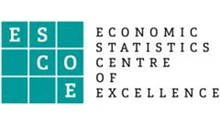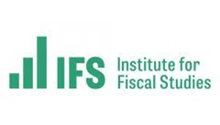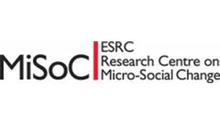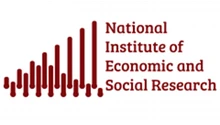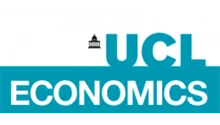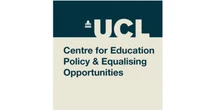Resistance to antimicrobial drugs has eroded their effectiveness at combating infections. Economics can help to analyse the problem and develop policy solutions, including subscription payments for antimicrobials, incentives for pharmaceutical companies and reformulation of existing treatments.
Since the fortuitous discovery of penicillin in 1928 by Scottish microbiologist and physician Alexander Fleming, antimicrobials – drugs that kill or inhibit micro-organisms such as bacteria, fungi and viruses – have become an indispensable tool of modern health.
Few drugs have had such a dramatic effect on life expectancy and social wellbeing, making potentially life-threatening infections readily treatable. Antimicrobials also underpin a wide range of medical treatments that we now take for granted, including elective surgery, caesarean sections and cancer care. It is no exaggeration to say that without antimicrobials, life and healthcare as we know it would not be possible.
Yet slowly, the emergence of resistance to these drugs has meant that their ability to treat infections effectively is being eaten away. We face a difficult situation in which antimicrobials are currently the only reliable treatment that we have against bacterial infections – but when they are used, selective pressure (an evolutionary process) causes resistant bacteria to survive and grow.
As a result, the more antimicrobials that are used, the less effective they become as a treatment. While antimicrobial resistance (AMR) is a natural consequence of evolution, overuse can unnecessarily accelerate the process.
How can economics help?
Natural scientists and healthcare professionals have long been grappling with the challenge of managing the rise of resistance – Fleming himself even warned about it in his 1945 Nobel lecture. But some of the answers may in fact come from another field: economics.
Many aspects of the supply and demand for antimicrobials and the growth of resistance are amenable to analytical tools and ideas that are well known to economists from other contexts. Indeed, some economists have recently begun to think through some of the challenges underpinning rising resistance (Laxminarayan and Brown, 2001, Review on AMR, 2016and Dubois et al, 2023).
Economists view the availability of effective antimicrobials as a type of exhaustible natural resource that is ‘extracted’ when they are used. Just as mining for oil or minerals reduces the amount that is left in the ground, using antimicrobials reduces their future efficacy. And once an antimicrobial ceases to be effective, we must switch to alternative treatments.
Yet the pipeline of new antimicrobials is not producing new effective drugs as fast as we need them. This calls for a clear-eyed analysis of intertemporal trade-offs – when the costs and benefits will come at different points in time – and a recognition that present-day policies will have consequences for the effectiveness of treatments in the future.
Our current armoury of antimicrobials is being depleted over time and it must be replenished with new drugs. But the rate of deterioration must also be carefully managed. It is therefore useful to think in terms of influencing the demand for existing drugs and the supply of new drugs: that is, to think like economists.
Managing the demand of antimicrobials through stewardship
Reducing antimicrobial use delays the rise of AMR – making stewardship crucially important. At the most basic level, the aim of stewardship is to reduce the number of infections needing treatment and to use antimicrobial treatment only when it is feasible and effective to do so.
From a public health perspective, there are two fundamental issues that lead to overuse of antimicrobials. The first has to do with intertemporal trade-offs of antimicrobial use and the second has to do with the ‘tragedy of the commons’, where individuals disregard the effects of their use of antimicrobials on others.
Economic principles suggest that there is an optimal time-profile of the use of a natural resource (in this case, antimicrobial efficacy). The optimal extraction/use policy must carefully balance the benefits of current and future use.
Typically, it will not be optimal to spend too much of the resource upfront, however tempting this may be. In the case of antimicrobial use, overuse today has a knock-on effect (or an opportunity cost) in terms of less effective treatment tomorrow – and there is great value in being able to treat infections in the future.
In addition, individuals and medical practitioners may not fully appreciate (or take account of) the fact that using more antimicrobials may erode their effectiveness for others.
If a doctor prescribes antimicrobials to a patient, this may lead to the build-up of resistance, meaning that a future patient may be left without treatment options for their infection. This is a classic problem of negative externalities: when these are not properly factored into prescription practices, it can lead to overuse.
In conclusion, decentralised, short-sighted use of antimicrobials may lead to both overuse and an undesirable front-loading of use, thereby harming both current and future generations of patients.
How then, do we ensure that antimicrobials are used judiciously? Doing so entails improving the quality of antimicrobial prescribing and dispensing. Since individuals and practitioners have only weak incentives to limit antimicrobial use, proper incentives and policies must be put in place such that private needs and public health goals are better aligned.
Physicians quite rightly make a priority of the needs of the patient they are treating that day. But when it comes to antimicrobials, there is also a collective responsibility to preserve their effectiveness for future patients. Strengthening the incentives and support systems around prescribing can help to align individual patient care with this wider public health goal.
Policies may also influence individual behaviour and decision-making to help to stem the rise of AMR by avoiding infections in the first place. Basic hygiene and sanitation are cheap yet highly effective ways to do so. For example, less than $1 per person per year could provide hand-washing facilities for all households in the world’s 46 least developed countries, saving hundreds of thousands of lives (World Health Organization and UNICEF, 2021).
When available, vaccines against infections can help to prevent new infections and, in some cases, also reduce onward transmission. This is particularly relevant in agriculture, where the close proximity of animals means that a single infected animal can infect many others and cause a greater outbreak.
Lastly, decision-making on when and how to use antimicrobials could potentially be improved by better and more rapid diagnostic testing. This is a tool for disease monitoring and infection control that has made some progress in recent years.
An ideal diagnostic test would reveal not only whether the cause of illness is an infection (rather than a virus), but also it would perhaps identify the infection present and indicate which of several possible treatments would be most effective.
Increasing the supply of new drugs
If it were possible to develop new effective antimicrobials regularly, and so continuously replace old ineffective ones, then the rise of AMR would be less of a problem. But unfortunately, new antimicrobials have become increasingly rare, and the pipeline of potential new ones is a major concern. There are both biological and economic reasons for this.
First, it appears that there is a limited number of ways to kill a bacterium without harming the host – all antibiotics use one of five broad mechanisms of action, and resistance to one of these approaches often carries through to other drugs using the same mechanism – and the pharmaceutical sector has already picked the low-hanging fruit.
Consequently, even with high quality research, major funding and strong institutional backing, it may simply be more difficult than before to develop new safe and effective antimicrobials.
Second, most large players in the pharmaceutical sector have abandoned the business of developing new antimicrobials altogether, finding it unprofitable. Many factors have contributed to this withdrawal, but the low market value of new antimicrobials is a major factor – the return on investment is seen as too low to justify large investments. Indeed, even successful antibiotics often lose money and, in some cases, developers go bankrupt despite scientific success.
Yet, as we have argued, new antimicrobials are socially extremely valuable. It is therefore important to understand the reasons that make it difficult for private firms to make profits once their products reach the market.
Several features of the antimicrobial market contribute. For starters, the main buyers of antimicrobials are public health services (such as the UK’s National Health Service, NHS), which must consider the population health consequences of using new antimicrobials. That is, their incentives are to limit use of antimicrobials, which can limit revenue if remuneration is ‘coupled’ with volume.
The second issue is that health services will want to hold any new effective drug carefully in reserve until it becomes absolutely necessary to use it due to all other drugs becoming ineffective. In other words, new drugs will become second or third-line antimicrobials, used only as a last resort. Again, this limits revenue if it is coupled with volume.
Lastly, an important market failure is a potential ‘hold-up problem’. Developing new antimicrobials is costly and time-consuming, yet once developed, they are relatively inexpensive to manufacture. This creates a concern that governments (via their health services), seeking both to contain costs and to restrict use, might be tempted to make only minimal payments for a product once it exists.
How might these issues be addressed?
Overcoming these issues is not trivial, and economists have thought hard about how best to do so.
If the NHS wants to provide incentives for the production of certain goods – such as personal protective equipment – in most cases, it can simply promise a subsidised purchase price for each unit purchased and consumed. Such a subsidy would increase returns to the supplier and hence provide it with an incentive to invest in and produce the good.
But because antimicrobial use leads to AMR, in this case, such production incentives are inappropriate. Instead, one solution is a subscription system: pharmaceutical companies that make antimicrobials available would receive remuneration in the form of a fee that is related to the quality of the antibiotics.
Importantly, this fee would be independent of how many – or few – drugs are used, thereby removing incentives for overproduction. The payments would be released on fulfilment of specific technical criteria that would be assessed by disinterested third parties, such as a technical secretariat or health technology assessment agency.
So long as such commitments are credible, they also solve the hold-up problem since they would allow companies to be confident of their payment once the drugs are developed. Governments successfully sign binding contracts in many other sectors, so they should be able to do so with medicines too.
While still relatively new in the antimicrobial space, the UK has successfully piloted and then launched a subscription model, and Canada and Japan have committed to pilots of their own. The European Union seems likely to adopt a similar system to reimburse research and development (R&D) costs by giving antibiotic developers a transferable exclusivity voucher – this would act like a lump sum payment to the innovator.
Subscription models are not the only solution. There are a host of different measures that can be put in place to make a fundamental alteration to the cost-benefit analyses of pharmaceutical companies, and thus encourage them to direct their attention and resources towards new antimicrobials.
These can be categorised as: early-stage push funding for basic research; mid-stage translational funding to help drugs to make the transition from the lab to eventual market launch; and late-stage pull funding, which ensures that marketed drugs receive attractive returns for drug companies.
The design of such incentive measures also raises interesting economic issues, for the details determine not only a firm’s incentives to put in effort but also how risks are shared between the firm and the funding body.
Lastly, there may be alternative ways to increase the supply of new effective drugs, such as finding ways to make better use of what we know already. This could involve identifying older compounds that may still have utility or developing novel combinations of older generic antimicrobials that may have synergy against multi-drug resistant pathogens.
In a recent report, we describe the economic analysis of AMR in some detail, including the numerous market and regulatory failures that contribute to the problem. We show that many ideas and policy tools that are routinely used by economists in other domains can inform policy and help us to combat the rise of resistant bacteria.
Authors’ note: This article draws on work co-authored with Ranil Dissanayake, and we are very grateful for his substantial contribution.
Where can I find out more?
- The economics of antimicrobial resistance: Center for Global Development working paper.
- Antimicrobial resistance: World Health Organization (WHO) fact sheet.
- State of the world’s hand hygiene: Report from the WHO and UNICEF.
- Can economics save us from the antibiotic crisis? Article from the Toulouse School of Economics.
- Tackling drug-resistant infections globally: Final report and recommendations from the Review on Antimicrobial Resistance.
- Economics of antibiotic resistance: A theory of optimal use: Article in the Journal of Environmental Economics and Management.
Who are experts on this question?
- Anthony McDonnell
- Ranil Dissanayake
- Katherine Klemperer
- Flavio Toxvaerd
- Michael Sharland









